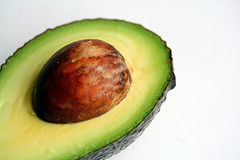Formulation and Evaluation of Gastroretentive Floating Tablets of Famotidine
FORMULATION AND EVALUATION OF GASTRORETENTIVE FLOATING TABLETS OF FAMOTIDINE
Chandira. Margret R.*, Sahu Chandra Mohan and Jayakar B.
Vinayaka Mission's College of Pharmacy
Vinayaka Missions University, Salem, T.N.-636008 (India)
ABSTRACT
Gastroretentive drug delivery systems are the systems which are retained in the stomach for a longer period of time and thereby improve the bioavailability of drugs. Different approaches for gastroretentive dosage forms include floating, raft, expanding or swelling, bioadhesive or mucoadhesive and high/low-density systems. Famotidine, an anti-ulcer drug, suffers from poor bioavailability (50%), as Famotidine is very less soluble in alkaline pH. Famotidine used in combination with antacids promotes local delivery of these drugs to the receptor of the parietal cell wall. Local delivery also increases bioavailability at the stomach wall receptor site and increases the efficacy of drugs to reduce acid secretion. Thus, the present work is aimed to formulate floating tablets of famotidine using an effervescent approach for gastroretentive drug delivery system.
* Corresponding Author
Vinayaka Mission's College of Pharmacy
KN Patty, Yercaud Main Road
Salem, T.N. - 636008 (India)
Mob. No. 09443009862, 09245804478
E.mail: This email address is being protected from spambots. You need JavaScript enabled to view it., This email address is being protected from spambots. You need JavaScript enabled to view it.
INTRODUCTION
Floating systems are one of the important categories of drug delivery systems with gastric retentive behavior. Drugs that could take advantage of gastric retention include: furosemide, cyclosporine, allopurinol ciprofloxacin and metformin. Drugs whose solubility is less in the higher pH of the small intestine than the stomach (e.g. chlordiazepoxide and cinnarizine, the drugs prone for degradation in the intestinal pH (e.g. captopril), and the drugs for local action in the stomach (e.g. misoprostol) can be delivered in the form of dosage forms with gastric retention. Antibiotics, catecholamines, sedative, analgesics, anticonvulsants, muscle relaxants, antihypertensive and vitamins can be administered in HBS dosage form.1,2,3
Floating tablets were prepared using directly compression technique using polymers like HPMC, K4M and HPMCK100M for their gel-forming properties. The HPMC alone polymer unable to controlled on release rate it release drug >90% in 4-6 hrs while in combination with Xanthan gum it release >90% in 8 hrs. The results indicate that gas powered gastroretentive floating of Famotidine containing 40mg HPMCK100M and Xanthan gum provides a better option for controlled release action and improved bioavailability. 4,5
Whole 8 pages article is available for download here.

